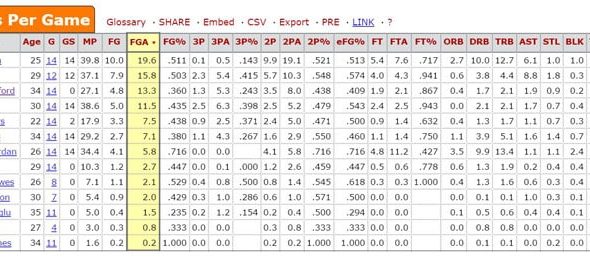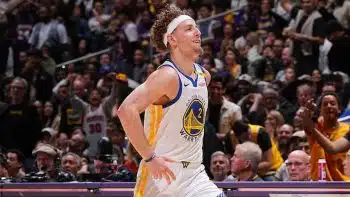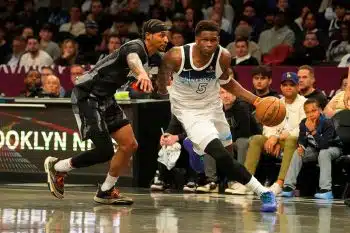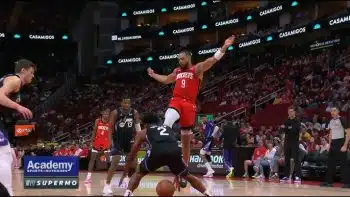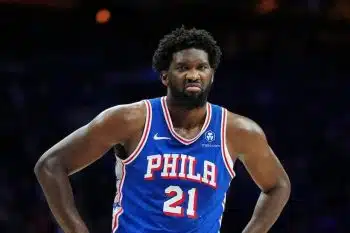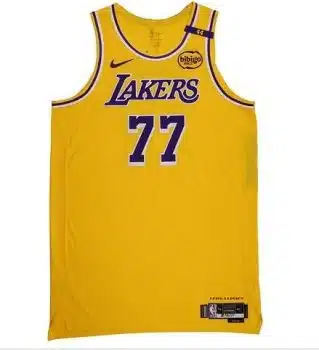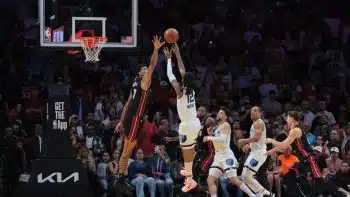NBA
NBA Saturday: What Should the Clippers do with Crawford?
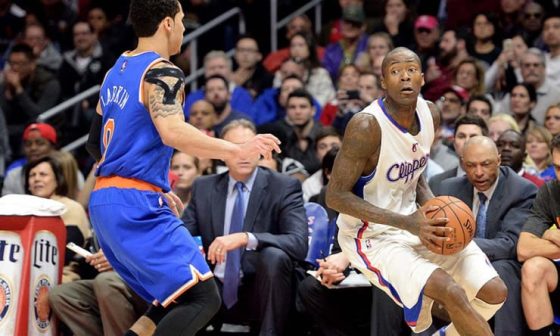
There are a lot of necessary ingredients for putting together a championship team. A championship contender typically needs a good mix of talented big men and wing players, at least two All-Star caliber players, solid coaching, chemistry, shooting, rebounding, defense, playmaking and depth.
Reasonable people can debate which ingredients are more important than others. Many people believe one such ingredient is having an elite scorer off the bench, a player that can check into a game and immediately put some points on the board. This must be an important role considering that out of the last 10 recipients of the Sixth Man of the Year award, nine were either a shooting guard or combo guard whose primary skill was scoring the basketball.
Interestingly, of those 10 players that won Sixth Man of the Year, none of their respective teams won the NBA championship the season they won the award. This includes Jamal Crawford, who won Sixth Man of the Year in 2009-10 with the Atlanta Hawks and again in 2013-14 with the Los Angeles Clippers (and came second in voting in the 2012-13 season). So it can reasonably be argued that having an elite scorer off the bench is not a crucial ingredient for a team that hopes to win an NBA championship (though having skilled offensive players is obviously still necessary). This argument directly applies to the aforementioned Crawford, who has put together a nice 15-year career up to this point, but has constantly been mentioned in trade rumors over the last few seasons.
Selected eighth overall in the 2000 NBA Draft by the Cleveland Cavaliers, Crawford was traded to the Chicago Bulls on draft night for Chris Mihm (the seventh pick) and cash. Crawford has career averages of 15.6 points, 3.7 assists, 2.4 rebounds and one steal per game, while shooting 41 percent from the field and 35 percent from three-point range.
In his fourth season, Crawford began to flash his scoring abilities, averaging 17.3 points per game for the Bulls and exploding for 50 points against the Toronto Raptors on April 11, 2004. Since then, Crawford has been a threat to go off on any given night. In addition, Crawford is one of the best ball-handlers in the league, has a killer crossover, is eighth all-time in three-pointers made, is the all-time leader in four-point plays, can play point guard in a pinch and is one of the best bad-shot makers in the league today. In short, Crawford has been a dynamic offensive player throughout his career and has been a great value for the Los Angeles Clippers over the last three seasons.
So why is it the case that Crawford’s name so often comes up in trade rumors recently?
There are a few reasons for that. First, Crawford is entering the last season of his four-year, $21.3 million contract. He is set to earn roughly $5.6 million this upcoming season, which is a bargain in the NBA’s current financial landscape. Consider that Kyle Singler, who has a 10.2 career Player Efficiency Rating, agreed to a five-year, $25 million contract this offseason with the Oklahoma City Thunder. In addition, Marco Belinelli (12.3 career PER) agreed to a three-year, $19 million deal with the Sacramento Kings. Both Singler and Belinelli are less accomplished players than Crawford, yet both are set to make just about as much, or more money than Crawford this season. And yet each of these contracts are relatively good deals considering that the cap is going to rise significantly after this upcoming season. Crawford’s contract was signed just a few seasons ago, but the NBA economy has changed a lot since then, and at this point, Crawford’s on-court value comparatively exceeds the money he is set to earn this season.
Another reason Crawford’s name comes up in trade rumors is the fact that the Clippers’ offseason moves make his role with the team less clear. This offseason, the Clippers traded for Lance Stephenson, re-signed Austin Rivers and signed Wesley Johnson, all of whom can backup J.J. Redick at shooting guard. Crawford arguably should be Redick’s primary backup, but assuming Crawford is eventually traded, or Crawford is out with an injury, it’s not hard to imagine that the Clippers would be fine plugging in one of these three players in his place. In addition, with Pablo Prigioni, Rivers and Stephenson all coming off the bench, it is unclear how often Crawford will be able to handle the ball and initiate the offense, which is where his value lies (this is especially true if Paul Pierce comes off the bench, which the Clippers are reportedly considering). Crawford isn’t known for coming off of screens or playing off the ball in general, so forcing him to play off the ball could diminish his ability to impact games.
The last significant reason that Crawford is often mentioned in trade rumors is the fact that his value for the Clippers in recent seasons has been somewhat inconsistent. For all of Crawford’s offensive abilities, which are substantial, he is the type of player that is just as likely to shoot his team out of a game as he is to catch fire. For every game where Crawford goes 11-15 from the field for 25 points, there seems to be another game where he goes 3-15 for seven points. This feast or famine approach can be problematic at times, and was especially so in the playoffs last season:
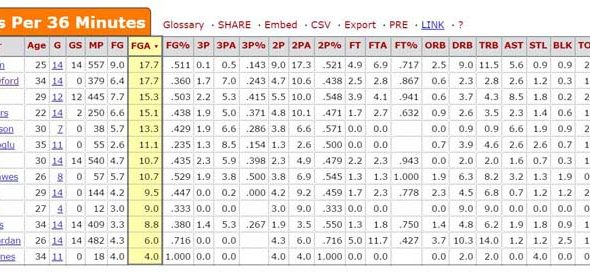
Charts courtesy of www.basketball-reference.com
Despite shooting 36 percent from the field overall and 24.3 percent from three-point range, Crawford was taking 13.3 shots per game and as many shots per minute as Blake Griffin during the Clippers’ playoff run last season. Crawford was certainly one of the Clippers most talented offensive players last season, so taking a heavy-dose of the team’s shots isn’t problematic in theory. But Crawford is such a confident shooter that missing 10 shots in a row doesn’t discourage him from continuing to shoot the ball, which can come at the expense of his team.
To be fair to Crawford, he was part of a second unit that needed him to carry it on offense, so his field goal attempts came about out of necessity. However, in 2013-14 Crawford again averaged the most shots per minute in the postseason (19.7) (despite shooting just 39.8 percent from the field), and the third most in 2012-13 (38.7 percent) when he played with a deep second unit. Considering this, it is fair to assume that despite adding more offensive talent and the fact that the Clippers will likely be a top offensive team again this upcoming season, Crawford will again take a big bulk of the Clippers shots in the postseason, whether he is making them at a high rate or not.
While there is value in Crawford’s ability to make difficult, timely and momentum-shifting shots, there is also value in distributing the ball more evenly and getting others involved. The Clippers’ goal at this point is to win a championship and if Crawford’s postseason performance from last season was any indication, it may be best for the Clippers if he isn’t around to take so many of the team’s shots, especially with so many other weapons on the roster this season.
This is especially true considering that Crawford is not much of a defensive player. Last season, Crawford ranked 53rd among all qualified shooting guards in ESPN’s Real Plus-Minus statistic (-2.28). Unsurprisingly, Crawford ranks so low because of his defense specifically. In terms of Defensive Real Plus-Minus, Crawford ranked 93rd among all qualified shooting guards (-4.38), which is dead last. In addition, when Crawford was on the court last postseason, the Clippers gave up 112.9 points per 100 possessions, which was over three points worse than the league’s worst defensive team last season, the Minnesota Timberwolves. Furthermore, when Crawford was off the court, the Clippers gave up just 95.3 points per 100 possessions, which is almost three points less than the league’s best defensive team, the Golden State Warriors. In short, for Crawford to be a positive contributor for the Clippers, he has to be on fire on offense, which, for the most part, he hasn’t been in the postseason for Los Angeles.
This is why the Clippers may be best served by moving Crawford for a big man that can backup DeAndre Jordan (or at least rotate with Griffin and Josh Smith in small-ball rotations). The Clippers signed Cole Aldrich this offseason to fill that role, but if Jordan is injured or Aldrich has to play significant minutes in the postseason, it’s hard to image Los Angeles overcoming teams like the Warriors or San Antonio Spurs in the postseason. The Clippers could combine Crawford and C.J. Wilcox’s contracts (or some other combination) to pursue big men like Chris Andersen, Chris Kaman, Josh McRoberts, Taj Gibson or Markieff Morris. While each of these deals is less than likely to happen for several reasons, each season there are players who are unexpectedly made available and the players mentioned here are simply representative of the type of players the Clippers should be targeting.
However, it should be noted that Coach Rivers recently said that Crawford is not likely to be traded this season.
“I’ve heard all the rumors about Jamal going other places,” Rivers told Fred Roggin on the Beast 980 last Friday. “Jamal’s a Clipper and I would be very surprised if he’s not a Clipper by the season’s end.”
While Rivers is taking the stance that Crawford is not likely to be traded, we have heard coaches and general managers say the same thing about other players, who were subsequently traded anyway. So while it’s possible that Crawford stays with the Clippers this season, he will still be made available if the right trade presents itself.
There are surely many people who will disagree with the idea that Crawford should be traded and argue that he is a crucial piece for the Clippers’ championship hopes. Again, his ability to knock down several shots in a row, create his own offense and provide a spark off the bench are significant attributes (which are why he will likely draw interest from other teams this season). We saw his potential value when he scored 16 crucial points in Game 7 against the San Antonio Spurs last postseason. But with additional offensive talent, limited trade assets and a need for another big man, it makes sense for the Clippers to look for a trade involving Crawford. Of course, the Clippers shouldn’t move Crawford unless they can get equal or better on-court value in return, but they should be open to potential trades involving him that could improve the team.
